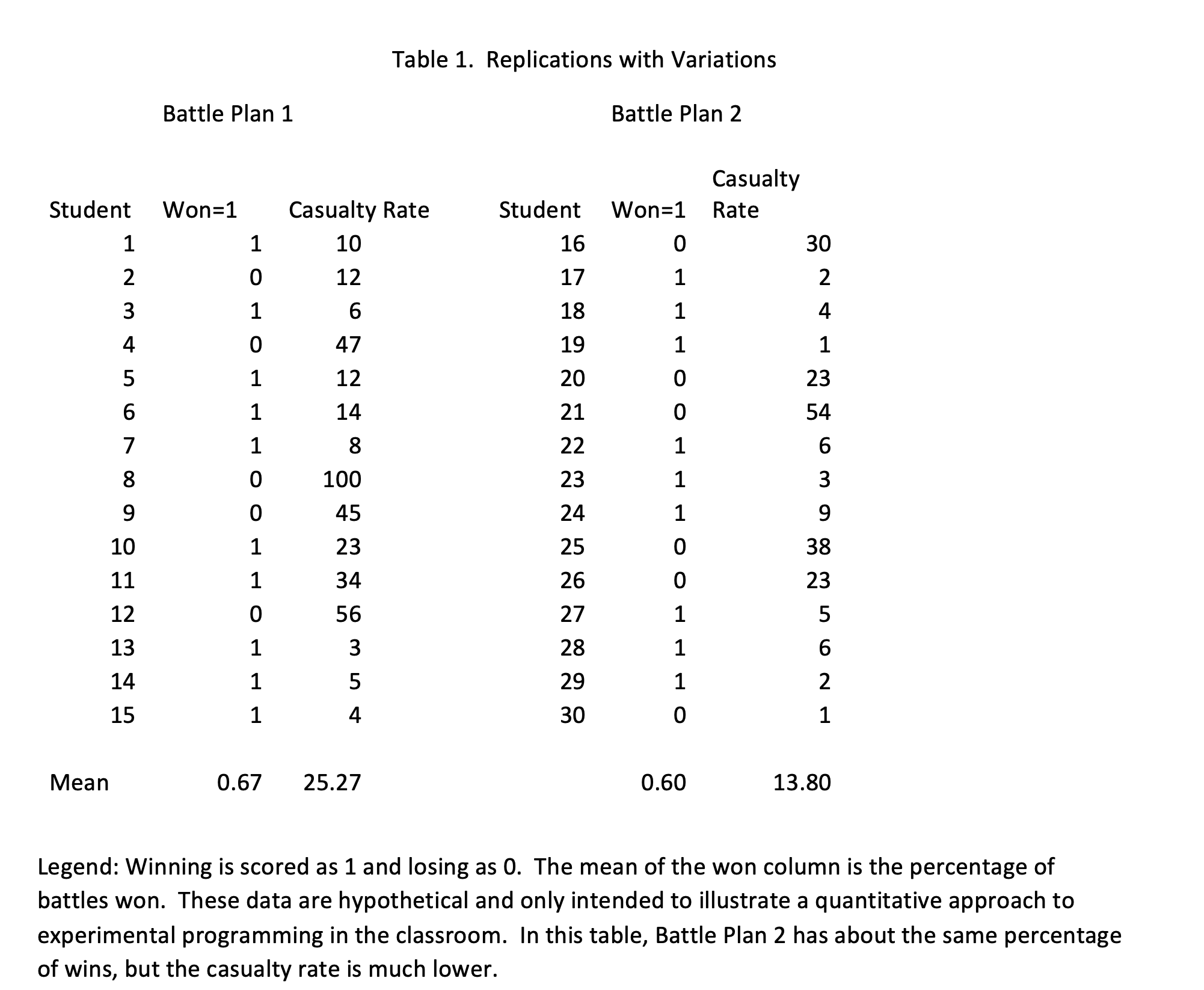Validating the Microcosm in Experimental Wargaming: Suggestions for Classroom Applications

Validating the Microcosm in Experimental Wargaming: Suggestions for Classroom Applications
By Jim Rohrer
Wargaming requires constructing a microcosm of a battle. Making a microcosm, which we can call modeling, simplifies reality to bring into play the essential factors affecting the outcome. Simplification in this fashion is based on assumptions regarding which aspects of the battle are essential and which can be eliminated. Faulty assumptions will result in misleading results. Therefore, validating those assumptions would be helpful. This essay addresses how the microcosm might be validated in classroom exercises.
Background on Experimental Wargaming
The literature on experimental wargaming contains gaps. Authors agree that experimental wargaming exists and it is important
Elements of the Microcosm
Constructing the simplified version of a battle requires awareness of the original order of battle (OOB), terrain, and mission objectives. Theoretically, a scaled back version of the OOB should be valid if the decisive components are represented and if the relative sizes of the competing armies is kept in the same ratio. In a simplification, nonessential specifics would be ignored (different models of field artillery pieces might all be assumed to be the same). The terrain would be simplified in the same way. Not every contour line from the original map needs to be included in the microcosm. The rule set used to determine casualties, movement distances, shooting distances, and random chance also includes simplifications.
Simplifications should be made carefully but we can never be sure that an important element has not been removed. At the conclusion of one iteration of a wargame, the player (or players) will have considered the factors that affected the outcome. However, they cannot be sure that their game closely mirrored reality.
If the microcosm can be validated, then players who win the wargame might have some confidence that they might have triumphed in a similar encounter. Strategies and tactics that were successful in the game might be better choices than those employed the losing side. If the microcosm is valid, then it might allow commanders to better evaluate options almost in real time.
Replication
Repeating the game will result in different outcomes because of effect of random chance designed into a rule set. Performing those replications allows the player to build a distribution of outcomes. What percentage of the time did the Blue army achieve its objectives? What was the average number of casualties? What was the range of casualty rates?
In Table 1, the replications are indicated by numbers. For example, the first game involving Battle Plan 1 is indicated by a student number. With a sufficient number of replications, the analyst can calculate the percentage of battles won and also indicators of performance, such as the casualty rate. Whether Battle Plan 1 or 2 works better can be assessed. The effect of the rule set on the result can be tested by inserting additional columns with different versions of the rules.
In a classroom environment, each learner could play a game solo, quickly accumulating several replications. Estimating the number of replications required is beyond the scope of this essay but rest assured that software is available for that purpose. In practice, we would not expect that wargamers would hold themselves to the same standard as laboratory scientists.

Reality Testing
Replications are useful for determining which outcomes are more likely and how those outcomes are affected by different battle plans. However, the results might be biased if the microcosm does not contain all essential elements or if the rules are not followed correctly. Nevertheless, the replication study allows the analyst to make predictions that can be compared to real world events. For example, the scenario could be an historical battle with known outcomes (see example
Reality testing does not confirm that each simplifying assumption was the correct choice. However, if the predicted outcomes are consistent with real outcomes, then overall the microcosm appears to have some validity.
Conclusion
Wargaming is now being used in a variety of degree programs.
References
1. Page EH. Modeling and Simulation, Experimentation, and Wargaming-Assessing a Common Landscape.; 2016.
2. Burns S editor. WAR GAMERS’ HANDBOOK: A Guide for Professional Wargamers.; 2015.
3. Wojtowicz N. From sandboxes to laboratories: evolution of wargaming into a method for experimental studies. International Journal of Scientific and Research Publications (IJSRP). 2019;9(12): p9644. doi:10.29322/ijsrp.9.12. 2019.p9644
4. Rohrer JE. Experimental Wargaming at the Tactical Level: An Example. Small Wars Journal. Published online June 22, 2022.
5. Hernandez A, McDonald M, Ouellet J. Post wargame experimentation and analysis: Re-examining executed computer-assisted wargames for new insights. Military Operations Research. 2015;20(4):19-37. doi:10.5711/1082598320419
6. Mainardi BE. Towards Better Civilian Strategic Education: A Case for Tabletop Wargames. Military Strategy Magazine. 2022;8(1):36-41.





